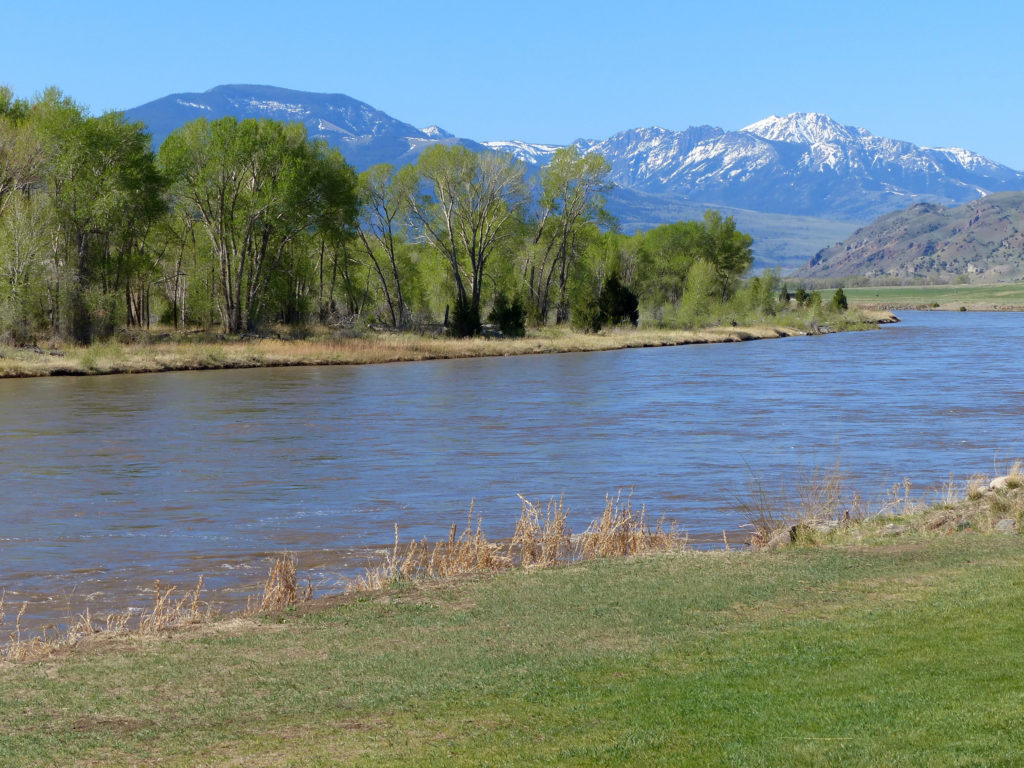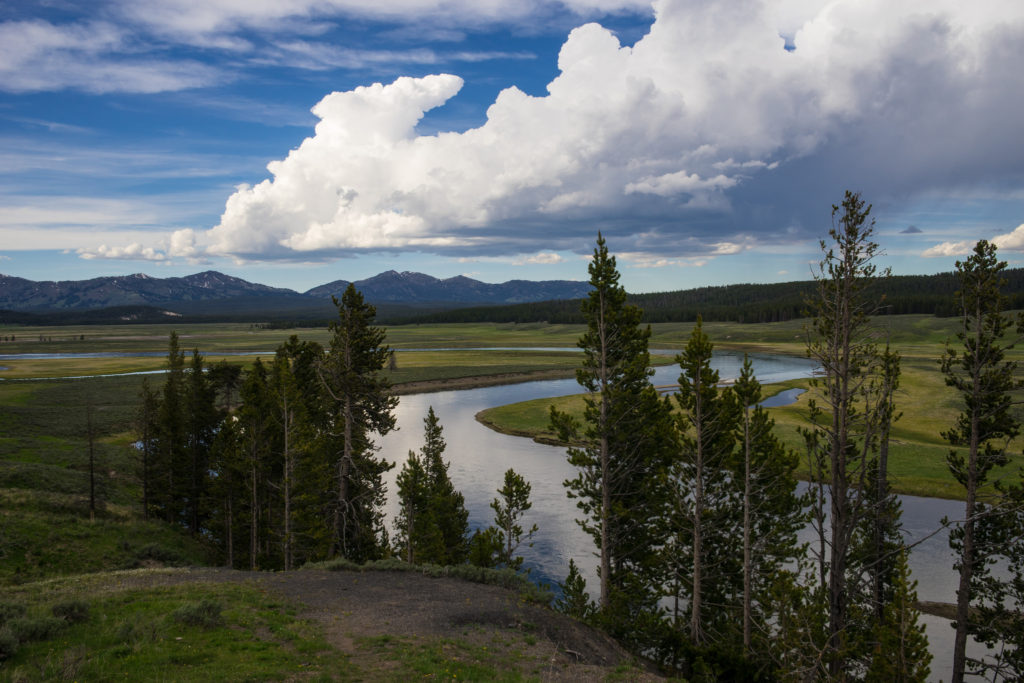
Yellowstone National Park, Idaho, USA, with its volcanic formations, extreme beauty, and exceptional colors, turn your visit into an unforgettable experience. The park is so big that each corner has its particularity, but there is a common element to every area. The earth’s crust is so thin that hot springs of different compositions appear everywhere, giving rise to the different shades of the wells and the areas that are irritating.
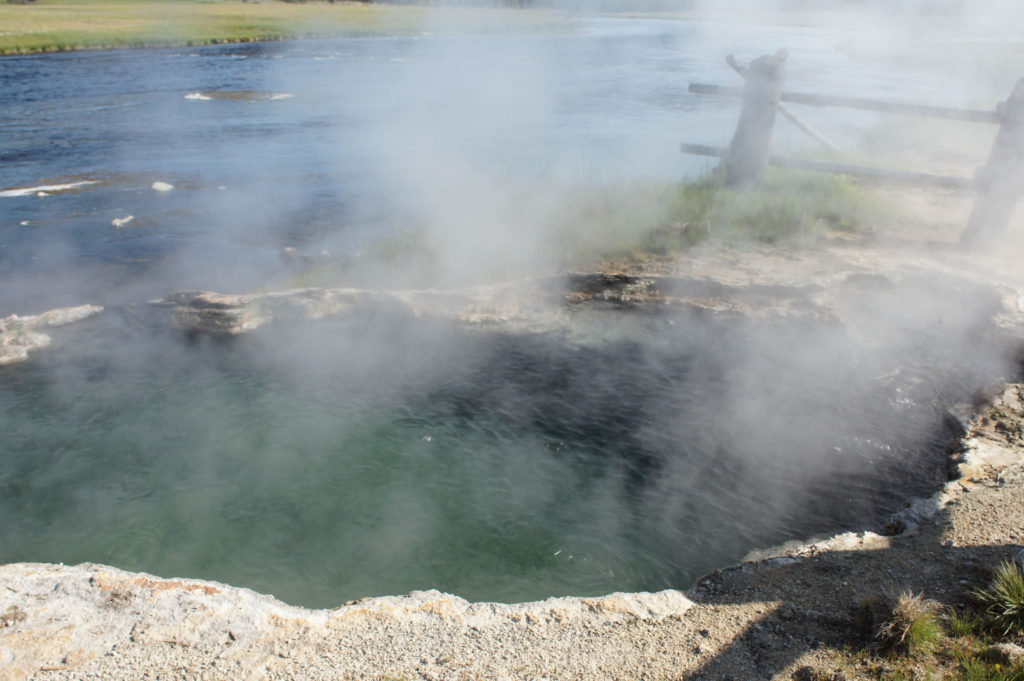
Yellowstone is a natural part of the United States declared a World Heritage Site in 1978, which extends into a vast natural region. Famous for its geothermal wealth, it is also the center of one of the largest ecosystems in the temperate zone of the world. It has the largest diversity of mammals on the continent located at Mount Washburn and Dunraven Pass, the highest point of Yellowstone. The center of the park is Yellowstone Lake, fed by the river of the same name, which has been inhabited for at least 12,000 years.
Things to do
Lower Falls
Located in the northeastern area of Yellowstone, these waterfalls are really striking. The yellow of the walls, polished by the river, combines with the green of the forests on the upper part. The Lower Falls is often described as being more than twice the size of Niagara, although this only refers to its height and not the volume of water flowing over it.
The canyon of the Yellowstone River is spectacular, it is about 1,000 meters deep and goes down in levels, where two huge waterfalls (Lower and Upper) plunge. Go to the Inspiration Point to get the best views. Both cataracts are perfectly accessible from parking areas, you only have to walk a few meters.
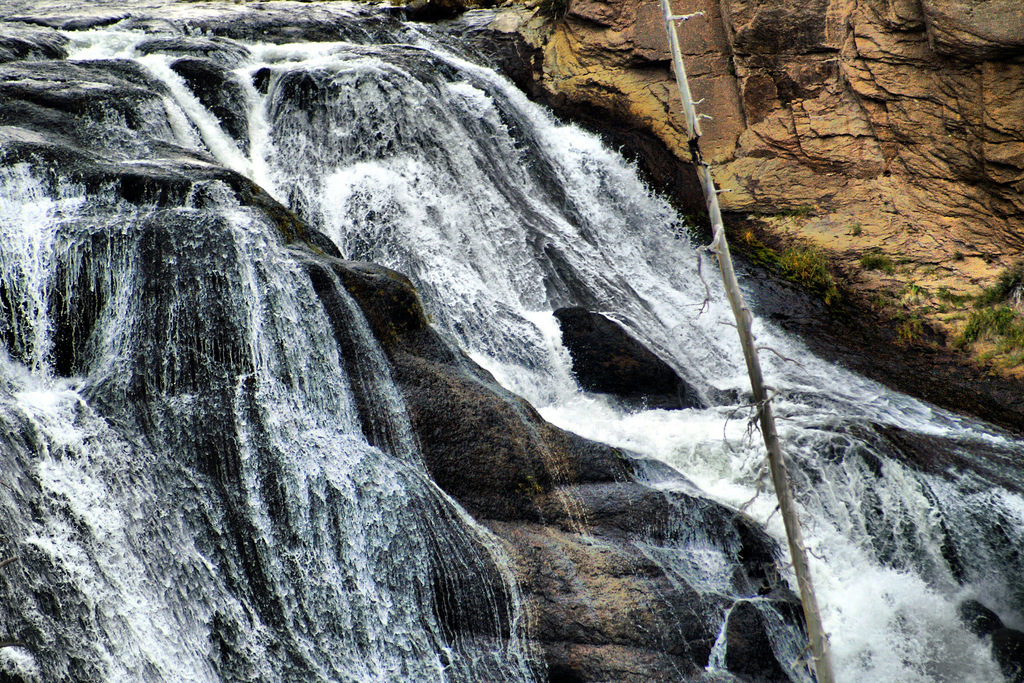
Grand prismatic spring
A spectacular thermal spring; being 90 meters long and 50 meters wide, it definitely is an unforgettable sight. Its vividly wonderful colors are the result of pigmented bacteria that grow around the edges of waters rich in minerals. These bacteria produce a range of colors that go from red to green, through a range of turquoises to orange chromatics.
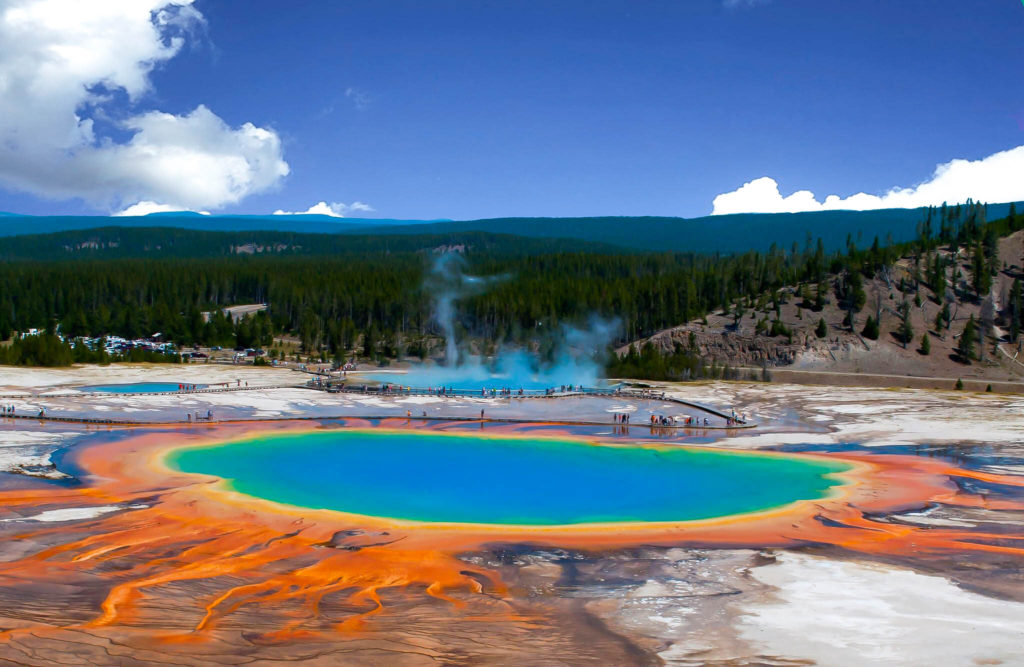
Grand Geyser
Grand Geyser is one of the most impressive geysers in Yellowstone Park. It is located in the Alto basin, where, a few hundred meters away, there are more than 75 active geysers. Besides, you can find hundreds of hot springs with beautiful shadows and transparencies. Thanks to a path of elevated footbridges, you can visit the entire basin, hoping to witness some spectacular eruptions; above all, the Grand Geyser is a highlight. It erupts every 10 hours for about 10 minutes straight, reaching a height of more than 60 meters. Another highly spectacular geyser is the Castle, with long eruptions that last on average 20 minutes every 13 hours.
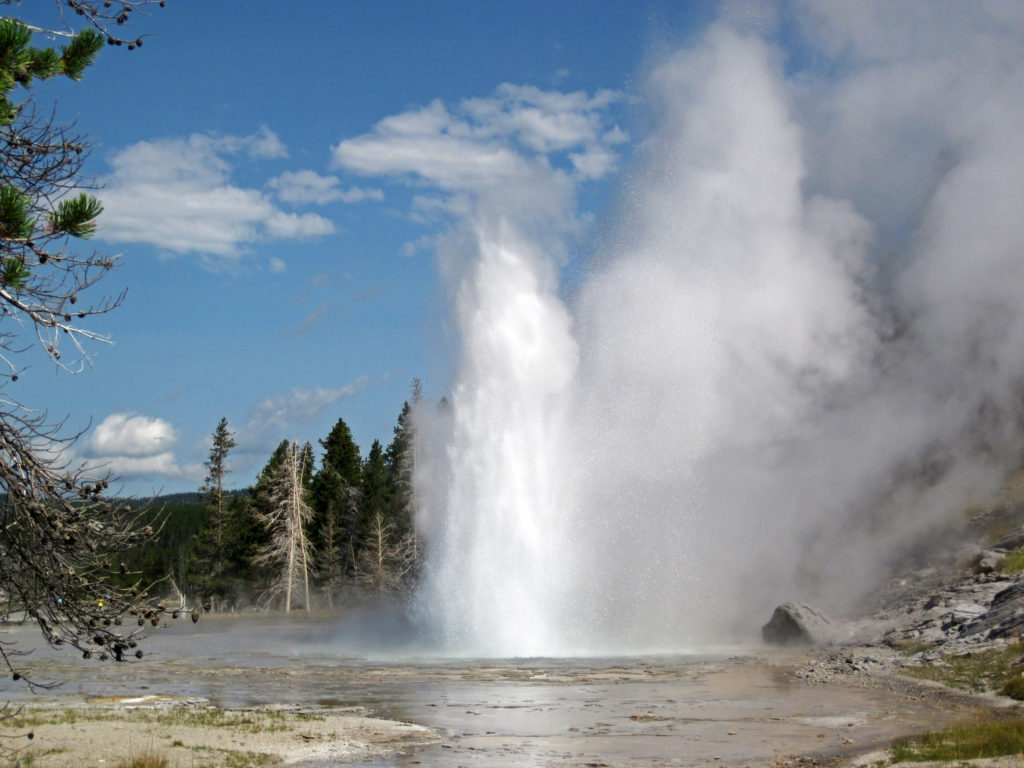
The Canyon Village Area
The Grand Canyon of the Yellowstone is roughly 20 miles long, measured from the Upper Falls to the Tower Fall area. The canyon was formed by erosion, as the Yellowstone River flowed over the softer rock. It can be seen from the Brink of the Upper Falls Trail and from Uncle Tom’s Trail.
Midway Geyser Basin
It is located inside the volcanic caldera itself, that is why the park is covered with multiple sources of thermal water and geysers; both vents of the supervolcano. There are about 10,000 thermal waters and geysers, creating backgrounds of emerald and turquoise colors, with reddish edges towards their whitish ends.
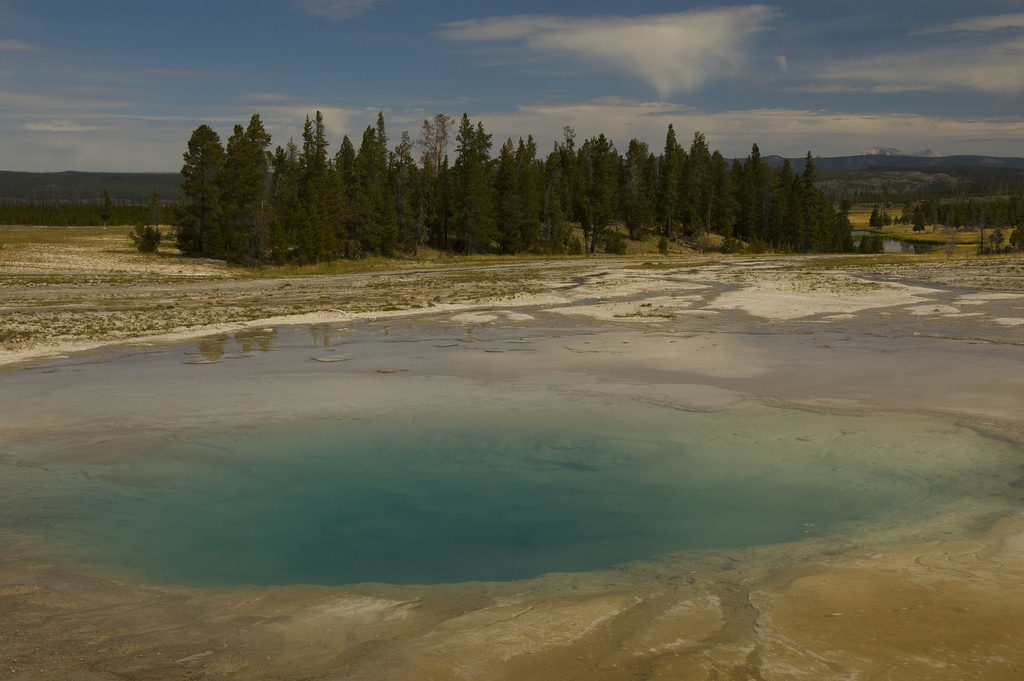
Hayden Valley
The Hayden Valley is one of the places where wildlife is most abundant. This green valley is completely crossed by the Yellowstone River, which forms large meadows that attract herds of bison, deer, and elk. There is a beautiful viewpoint halfway between Canyon and Lake Village, where the river forms a large loop surrounded by extensive meadows and pine forests, with high mountains as a backdrop.
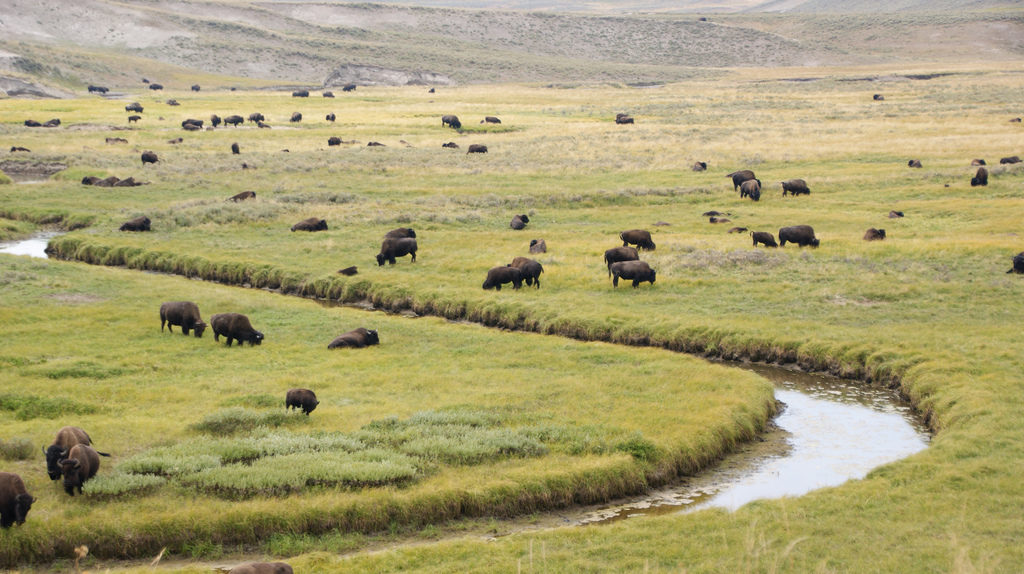
How to get there
Jackson Hole Airport is the largest airport in Wyoming and the main airport serving Yellowstone. United serves Jackson Hole from Denver and Delta from Salt Lake City. Besides, Yellowstone National Park has 5 entrances you can reach if you are traveling by car.
US Route 89 is open all year long and takes you to the north entrance; US Route 212 leads to the northeast entrance, however, it is closed in winter (from mid-October to May). Now, US Route 14/16/20 and US Route 89/191/287 reach the east and south entrances, respectively, but both close from early November to early Mary (winter months).
Lastly, US Route 20/191/287 leads to the west entrance, but it’s closed from early November to late April.
When to go
During the summer months (late April to early November) temperatures range between 75ºF (25ºC) and 80ºF (30ºC) during the day; however, the higher the elevation, the colder the temperatures get. In winter, temperatures are often between 20ºF (-6ºC); during the night, it has dropped to -66ºF (-54ºC). Spring and fall have a similar climate, with temperatures rarely leaving the 30ºF (0ºC) and 60ºF (20ºC) during the day; at night, it can drop to 20ºF (-5ºC) or lower.
How long do I go for
Just 2 or 3 days are enough to see the highlights of Yellowstone National Park. However, if you want to deeply explore the wonders of this park, allow yourself to stay for 5 days or a whole week.

Opening and Closing Hours
The Yellowstone National Park is opened 24 hours from Monday to Sunday.
Planning
There are many hotels and campgrounds within Yellowstone National Park; however, they quickly fill during the summer, so booking in advance is recommended. Still, it is common for people to cancel their trips, so check frequently to see if anything becomes available. Make your reservation at Xanterra Parks & Resorts or call (307) 344-7311.
The Old Faithful Snow Lodge and the Mammoth Hotel are the only ones opened during winter.
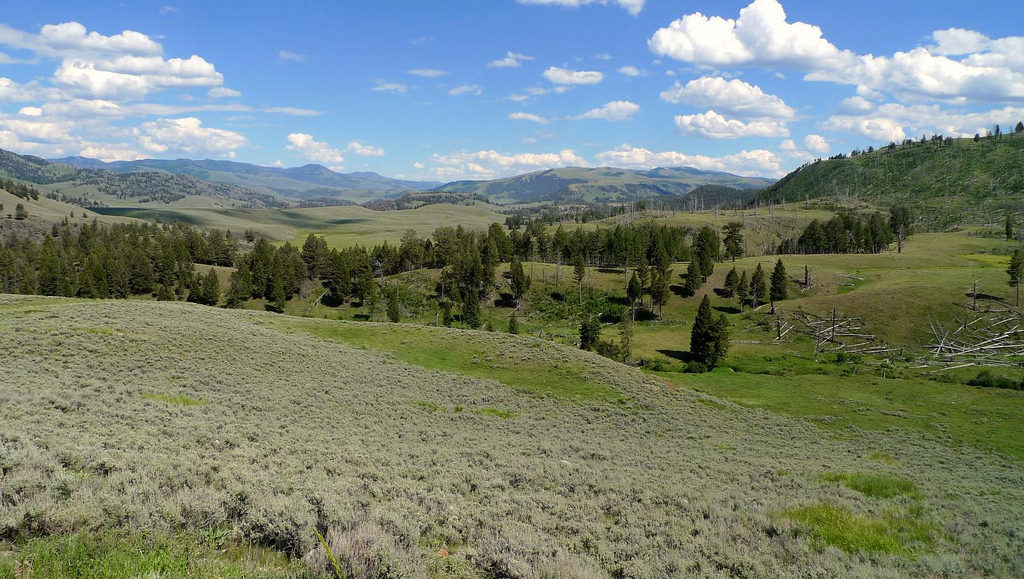
Inside Information
The weather in Yellowstone National Park is unpredictable; in a short time frame, a warm and sunny day can turn into a rainy and cold one. Make sure to pack a wide range of clothing for different climates, and be prepared for any sudden change. Don’t be surprised when you don’t find any televisions, radios or internet in your lodge; to protect the natural surroundings, lodges don’t offer these services. Take this as a chance to connect with nature to the fullest!
Remember to purchase clear glass filters for your camera, since the high mineral content in the waters and mist can damage the lens permanently. Eyeglasses can also be damaged; if water splashes your glasses, wash them immediately with clean water or lick them (seriously).
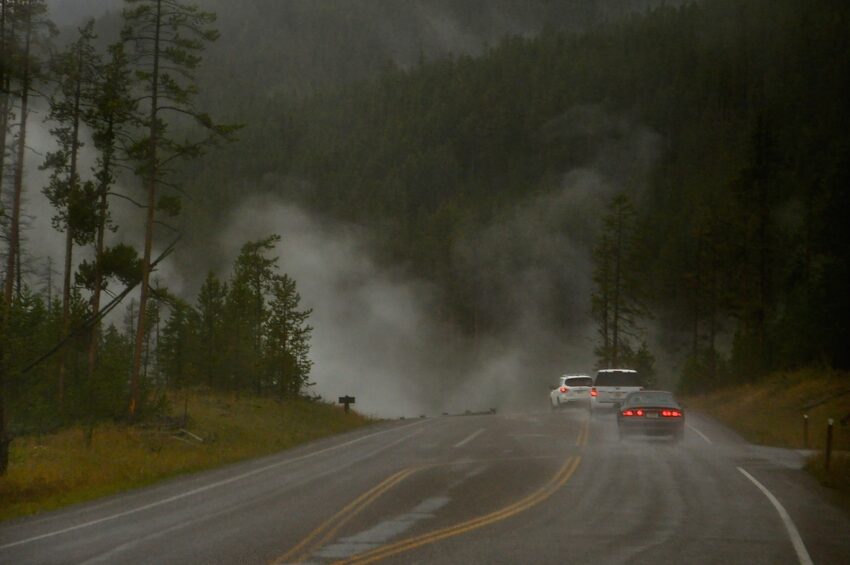
Entry Requirements
USA Entry
To enter or transit the USA as a visitor, you will need to get a visa, or an Electronic System for Travel Authorisation (ESTA) visa waiver. The latter allows you to travel to the USA for up to 90 days, be it for tourism, certain types of business visits, and transit to another country.
To apply for the ESTA, you have to complete an online pre-registration form and pay a 14 USD fee per application. Submit your application no less than 72 hours before your departure, so it can be processed and approved by the US authorities. There’s no need to complete the ESTA if you are arriving from Vancouver or Victoria, Canada by ferry or land.
Yellowstone National Park Entry
There are different entrance fees to pay according to the vehicle you are driving, and all of them are valid for seven days. For non-commercial vehicles, $35; hikers and cyclists have to pay $15, and for motorcycles and snowmobiles, $25. As an alternative to the seven-day fee, you can buy a Park Annual Pass, which costs $60 and is valid until the end of the month 1 year after the purchase date.
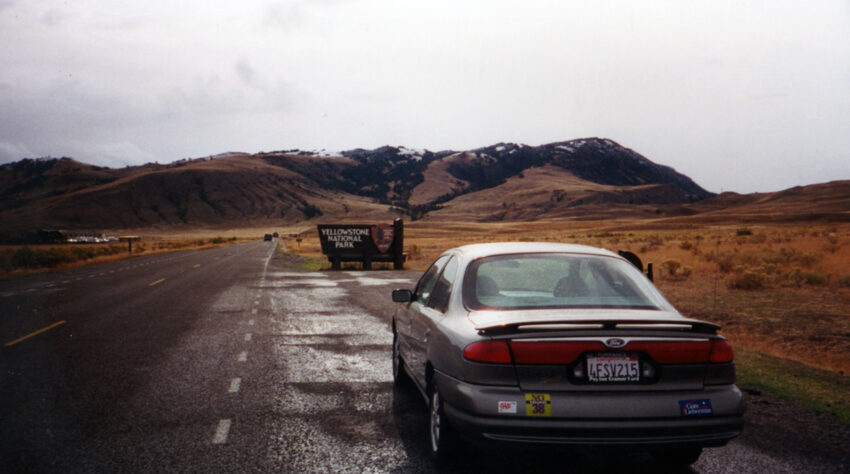
Local Laws and Customs
It is illegal (and actually pretty dangerous) to swim in the thermal pools. Yellowstone is, of course, subject to US Federal Law. Permits issued by surrounding states are generally not valid in the Park. If a visitor in the park is cited for an offense (e.g. speeding, feeding wildlife, not securing food in a campsite, etc), the fine must be paid immediately. Then, said visitor is free to make their case to the court at the Park Headquarters in Mammoth Hot Springs.
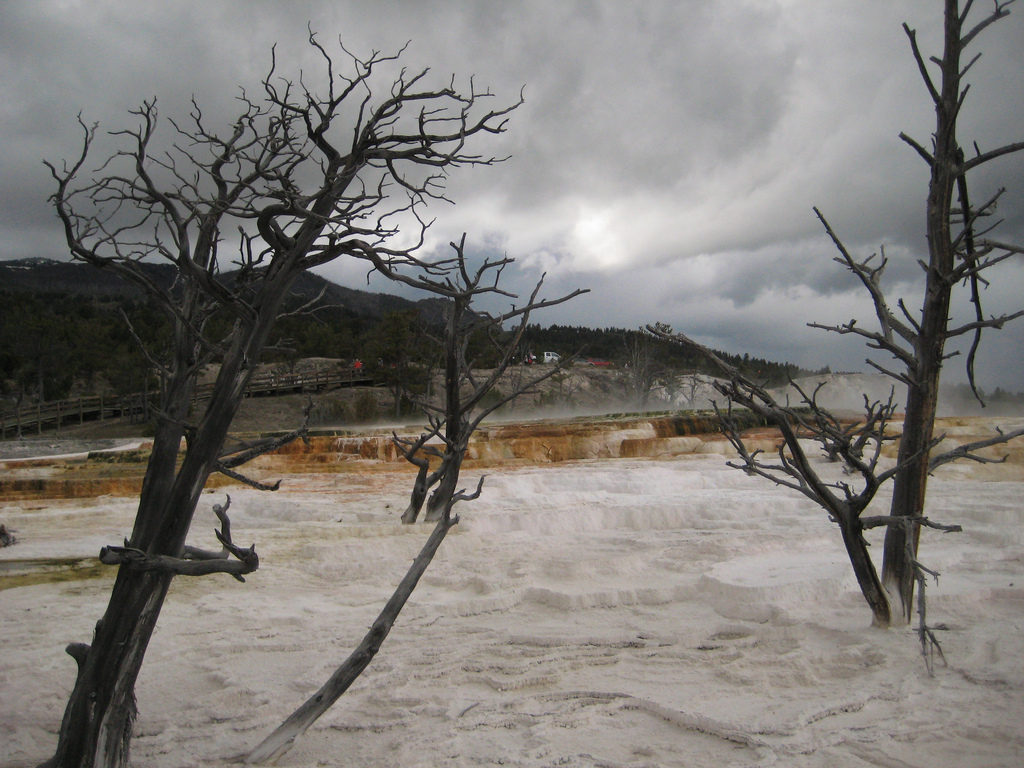
Money
The official currency is the United States dollar ($), divided into 100 cents (¢). Foreign currencies are almost never8 accepted. Common American banknotes are the $1, $5, $10, $20, $50 and $100 bills. The $2 bill is still produced but rarely seen in circulation; in fact, it is generally refused as payment.
The standard coins are the copper-colored penny (1¢), and the silver-colored nickel (5¢), dime (10¢) and quarter (25¢).
Tipping
Tipping in the United States is so common and expected that in many service establishments customers who did not tip are often asked to pay a tip and, even though it is very rare, they can get scolded by staff for “stiffing” them. Taxis are often tipped 10-20%; tour guides, between 5% and 10%; food delivery, around 5%, and 15%; and housekeeping at hotels, 2% per day.
What to Buy
You can get camping supplies and souvenirs in the villages inside the park. Besides, there are some automobile services spread across the park, offering gasoline, diesel and even auto repair.
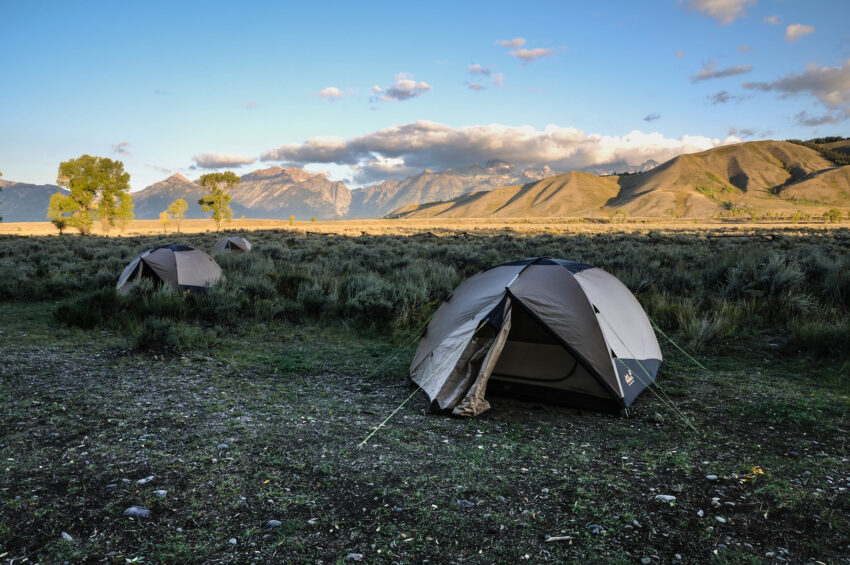
Safety and Security
Terrorism
Terrorists are very likely to try to carry out attacks in the USA. Attacks are usually carried out by individuals inspired by terrorist ideologies to do a so-called ‘lone actor’ attacks. They can target public events with little or no notice.
Health
It is very likely to spot wildlife in the park; however, stay at least 100 meters away from wolves and bears, and 25 meters from any other animal. They are used to humans and can seem docile, but nothing assures you they will not attack. Also, don’t cook outdoors and keep your camp clean to avoid attracting bears. In addition, some toiletries have strong smells that can attract them; keep them secure if you are camping in the park.
On the thermal areas, the waters can be above boiling temperatures, so stay within the designated areas to avoid scalding and serious burns.
If you are hiking in the park, make sure to have the 10 essentials:
- Navigation
- Hydration and Nutrition
- Pocket Knife
- Sun Protection
- Insulation
- Ability to make fire
- Lighting
- First Aid
- Shelter
- Whistle
Check USA’s specific health advice on TravelHealthPro at least 8 weeks before your trip.
Natural disasters
As I mentioned before, the weather can change quickly here, and with little to no warning. Hypothermia can be a concern since the temperatures can drop drastically and catch you off guard. Lightning can and have injured people in the park, and have even killed some; if you hear thunder, take shelter. However, the weather can also go from bad to good in no time; if you don’t like how the sky looks, just wait 10 minutes and it’ll probably change.
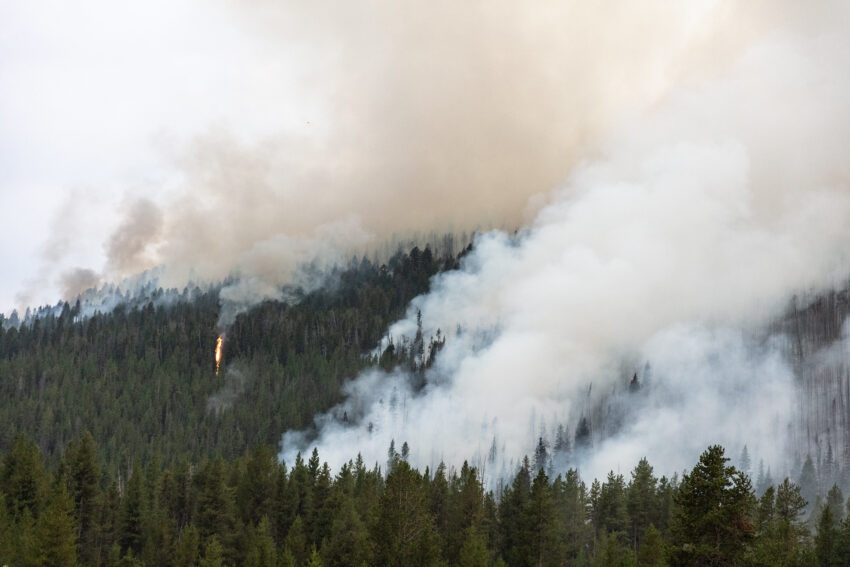
History
Thousands of years ago, the Yellowstone supervolcano erupted and covered all of western U.S. in a cloud of ash, along with a big part of the Midwest, northern Mexico, and the eastern Pacific Coast. The eruption left a caldera of around 34 by 45 miles (55 by 72 km). Investigators say that the Yellowstone supervolcano erupts every 600,000 to 900,000 years, and the last volcanic event happened 640,000 years ago. Its eruptions are considered the largest on Earth, and the climate change it produces afterwards is significant.
Yellowstone was declared a National Park in 1872, becoming the first reserve in the world to be given that title. Later, in 1978, it was designated a UNESCO World Heritage Site.
Websites
Other Nearby Attractions
Grand Teton National Park
Standing just south of Yellowstone National Park, the Grand Teton National Park offers beautiful mountain views and alpine lakes. If you plan to visit both National Parks, you can pay just one entrance fee for both with a discount. Now, for non-commercial vehicles, the combined fee is $50, $20 for hikers and cyclists, and $40 for motorcycles and snowmobiles. Keep in mind that the road connecting the two parks closes during winter (early November to mid-May).
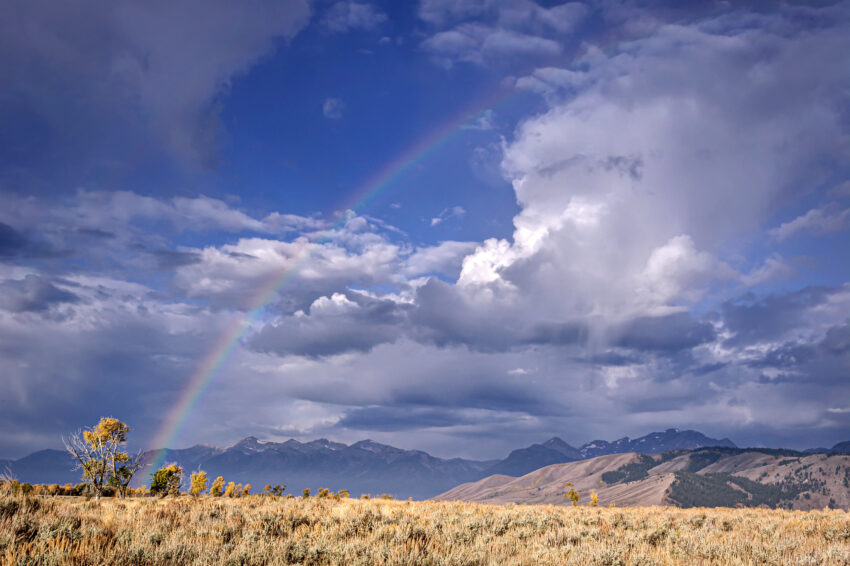
If you loved this article or found it useful, don’t forget to share it with your adventurous and travel-hacking friends! If you want more posts like this, follow us on Youtube, Instagram, Pinterest, Twitter Facebook or Reddit and subscribe to our newsletter!


